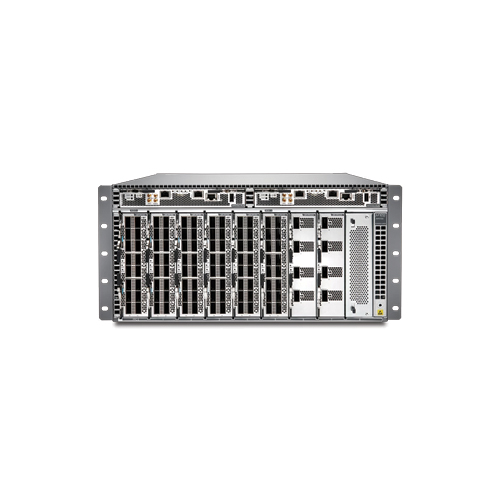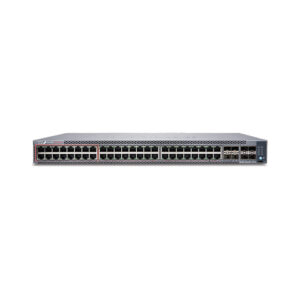Description
QFX5700 Switches
The QFX5700 line of Switches leverage the power of a fully programmable chipset and support advanced Layer 2, Layer 3, and Ethernet VPN (EVPN)-Virtual Extensible LAN (VXLAN) features. The platform supports diverse use cases such as Data Center Fabric Spine, EVPN-VXLAN Fabric, Data Center Interconnect/Border, Secure DCI, multi-tier campus, campus IP fabric, and connecting firewall clusters in the DC to the fabric. It offers a choice of interface speeds for server and intra-fabric connectivity, providing deployment versatility and investment protection.
The QFX5700 is a versatile platform for today’s data centers. For large public cloud providers and service providers looking to meet explosive workload growth, the QFX5700 supports very large, dense, and fast 400GbE IP fabrics based on proven Internet scale technology. For enterprise customers seeking investment protection as they transition their server farms from 10GbE to 25GbE, the QFX5700 also provides a high radix-native 100GbE/400GbE EVPN-VXLAN spine option at reduced power and a smaller footprint. With 25.6 Tbps of bidirectional bandwidth, the switch is optimally designed for spine-and-leaf deployments in enterprise, high-performance computing (HPC), service provider, and cloud data centers.
Key Features
Use Case: Data Center Fabric Spine, EVPN-VXLAN Fabric, Data Center Interconnect (DCI) Border, Secure DCI, Multitier Campus, Campus IP Fabric
Port Density: 32 x 400GbE QSFP56-DD; 64 x 200GbE; 128 x 100GbE; 144 x 50/40/25/10GbE
Throughput: Up to 25.6 Tbps (bidirectional)
Features + Benefits
Data Packet Timestamping
Enables select packets to be timestamped with references to the recovered PTP clock. This timestamping information can be mirrored onto monitoring tools to identify network bottlenecks that cause latency.
Junos OS Evolved Architecture
Supports native Linux operating system with a modular design of independent functional components, enabling individual components to be upgraded independently while the system remains operational. Localization of the component failures can be corrected by upgrading and restarting the specific component without having to bring down the entire device.
Network Automation
Supports intent-based automation, Python, Puppet, Ansible, and Zero Touch Provisioning (ZTP) to address growing network complexity for Day 0 to Day 2+ operations.






